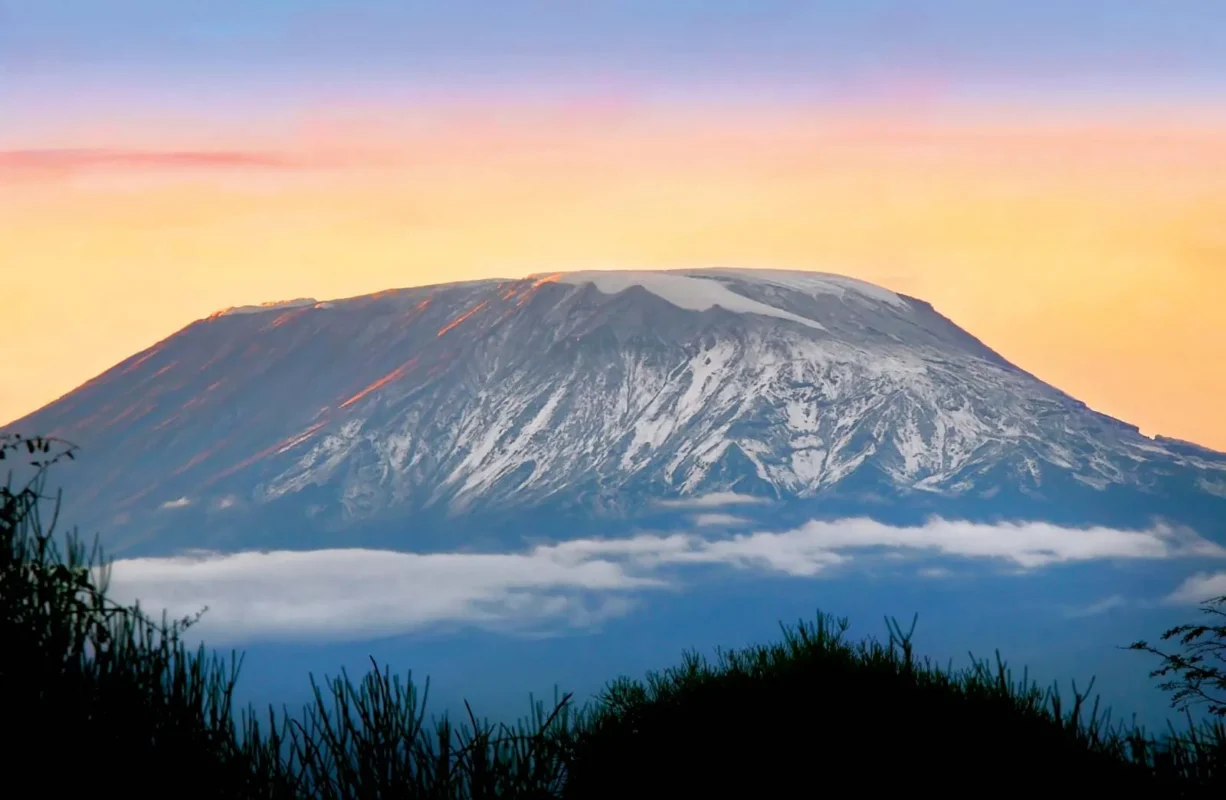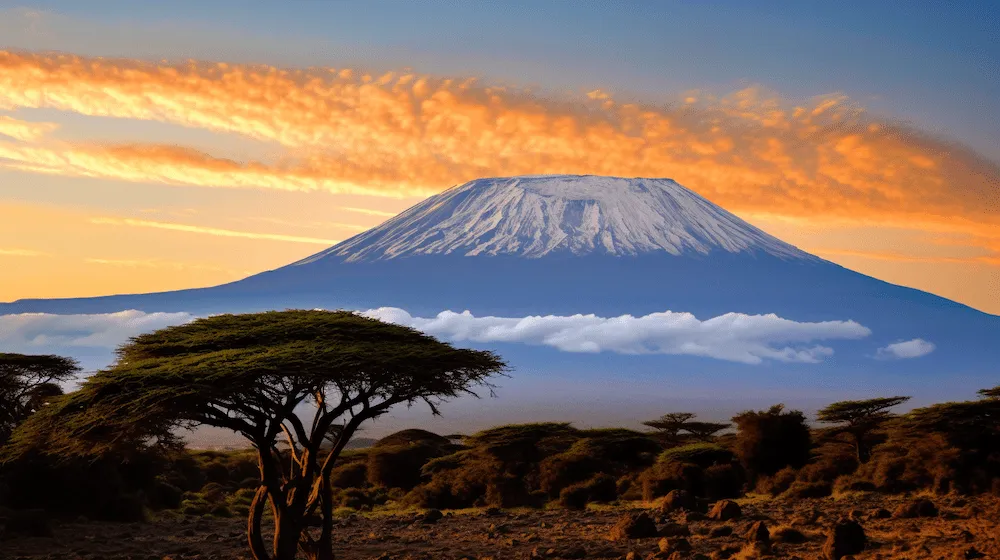Mount Kilimanjaro, the towering marvel of East Africa, is renowned for its breathtaking elevation and commanding presence. How Tall is Mount Kilimanjaro in Feet? As Africa’s highest mountain, Kilimanjaro’s height is a subject of fascination for climbers, adventurers, and geography enthusiasts alike. This comprehensive guide delves into the height of Mount Kilimanjaro, its significance, and the factors that contribute to its towering stature.
1. The Height of Mount Kilimanjaro in Feet
1.1. Official Height
Mount Kilimanjaro stands at an impressive elevation of approximately 19,341 feet (5,895 meters) above sea level. This measurement makes it the highest peak in Africa and one of the tallest freestanding mountains in the world.
1.2. Measurement Techniques
The height of Mount Kilimanjaro has been measured using various techniques over the years:
- Historical Surveys: Early measurements were taken using traditional surveying methods, which provided initial estimates of the mountain’s height.
- Modern Techniques: Advances in technology, such as GPS and satellite measurements, have provided more accurate readings. The current official height of 19,341 feet was confirmed using these modern techniques.
2. Comparative Heights: Mount Kilimanjaro in Context
2.1. Comparison with Other Peaks
To understand Kilimanjaro’s height, it’s useful to compare it with other notable mountains around the world:
- Mount Everest: The world’s highest peak, standing at 29,032 feet (8,849 meters). Kilimanjaro is significantly shorter than Everest but remains the tallest mountain in Africa.
- Mount McKinley (Denali): The highest peak in North America, measuring 20,310 feet (6,190 meters). Kilimanjaro is slightly shorter than Denali.
- Mont Blanc: The highest peak in the Alps, at 15,774 feet (4,808 meters). Kilimanjaro surpasses Mont Blanc by over 3,500 feet.
2.2. Freestanding Mountains
Mount Kilimanjaro is one of the tallest freestanding mountains in the world, meaning it rises independently from the surrounding terrain. Other notable freestanding mountains include:
- Mount Fuji: Standing at 12,389 feet (3,776 meters) in Japan.
- Mount Elbrus: The highest peak in Europe, reaching 18,510 feet (5,642 meters).
3. The Geographical and Geological Significance of Kilimanjaro’s Height
3.1. Formation and Volcanic Activity
Mount Kilimanjaro is a stratovolcano with three distinct cones: Kibo, Mawenzi, and Shira. The mountain’s height is a result of volcanic activity:
- Kibo: The highest cone, reaching 19,341 feet. It contains the summit crater, which is a prominent feature of Kilimanjaro.
- Mawenzi: The second-highest cone, standing at 16,893 feet (5,149 meters). It has a rugged appearance and contributes to the mountain’s overall height.
- Shira: The oldest and lowest of the three cones, at 13,141 feet (4,005 meters). It features a large plateau.
3.2. Influence of the East African Rift
Kilimanjaro’s height and geological features are influenced by the East African Rift System, a major tectonic boundary that extends across East Africa. The rift’s tectonic activity has contributed to the mountain’s elevation and volcanic formation.
4. The Impact of Elevation on Kilimanjaro’s Ecosystems
4.1. Vegetation Zones
Mount Kilimanjaro’s elevation creates diverse ecological zones:
- Cultivated Zone: At lower elevations, the mountain supports agricultural activities with crops such as coffee and bananas.
- Montane Forest: Higher up, lush forests thrive with a range of plant and animal species.
- Moorland and Heather: Above the forest zone, the environment transitions to heath and moorland vegetation.
- Alpine Desert: Near the summit, the vegetation is sparse, with hardy plants adapted to harsh conditions.
4.2. Glaciers and Ice Fields
The high elevation of Kilimanjaro allows for the formation of glaciers and ice fields. These glaciers are located on the summit of Kibo and are crucial for the mountain’s ecosystem. However, they are retreating rapidly due to climate change.
5. Climbing Mount Kilimanjaro: Understanding the Challenge
5.1. Trekking and Climbing Routes
Climbing Kilimanjaro is a popular adventure, and its height presents both challenges and rewards for climbers. The mountain offers several routes with varying difficulty levels:
- Marangu Route: Known as the “Coca-Cola” route, it provides a relatively easier ascent with hut accommodations.
- Machame Route: The “Whiskey” route is more challenging and offers spectacular views.
- Lemosho Route: Known for its scenic beauty and less crowded paths.
- Rongai Route: Approaches from the north and provides a quieter experience.
5.2. Altitude Sickness
The high elevation of Kilimanjaro can lead to altitude sickness. Climbers should be aware of the symptoms and take necessary precautions to acclimatize properly.
5.3. Preparation and Training
Climbing Kilimanjaro requires physical preparation, including aerobic exercise and hiking training. Proper acclimatization and gear are also essential for a successful trek.
6. The Cultural and Historical Significance of Kilimanjaro’s Height
6.1. Local Legends and Myths
Mount Kilimanjaro holds cultural significance for the Chagga people and other local communities. Legends and myths often refer to the mountain’s towering presence and its role in local folklore.
6.2. Exploration History
The height of Kilimanjaro has fascinated explorers since the late 19th century. Notable figures such as Hans Meyer and Ludwig Purtscheller made the first recorded ascent in 1889, contributing to the mountain’s legendary status.
7. Conservation and Environmental Impact
7.1. Environmental Challenges
The height of Kilimanjaro, coupled with its ecological diversity, makes it vulnerable to environmental challenges. Issues such as deforestation, soil erosion, and climate change impact the mountain’s ecosystems.
7.2. Conservation Efforts
Efforts to conserve Kilimanjaro include reforestation projects, climate change research, and community engagement initiatives. Sustainable tourism practices also play a role in preserving the mountain’s natural beauty.
8. The Future of Mount Kilimanjaro’s Height
8.1. Climate Change Impacts
Climate change poses a significant threat to Kilimanjaro’s glaciers and ecosystems. Monitoring and addressing these impacts is crucial for preserving the mountain’s height and ecological balance.
8.2. Ongoing Research and Innovation
Research and technological advancements are essential for understanding and mitigating the effects of climate change on Kilimanjaro. Innovations in conservation and environmental management will play a role in protecting the mountain’s future.
Conclusion
Mount Kilimanjaro’s height of 19,341 feet (5,895 meters) is a testament to its grandeur and significance as Africa’s highest peak. Understanding the elevation of Kilimanjaro provides valuable insight into its geological formation, ecological diversity, and the challenges faced by climbers and conservationists alike.
From its towering summit to its diverse ecosystems, Kilimanjaro stands as a symbol of natural beauty and resilience. As we look to the future, preserving the height and integrity of Mount Kilimanjaro will remain a priority, ensuring that this majestic mountain continues to inspire and captivate for generations to come.



